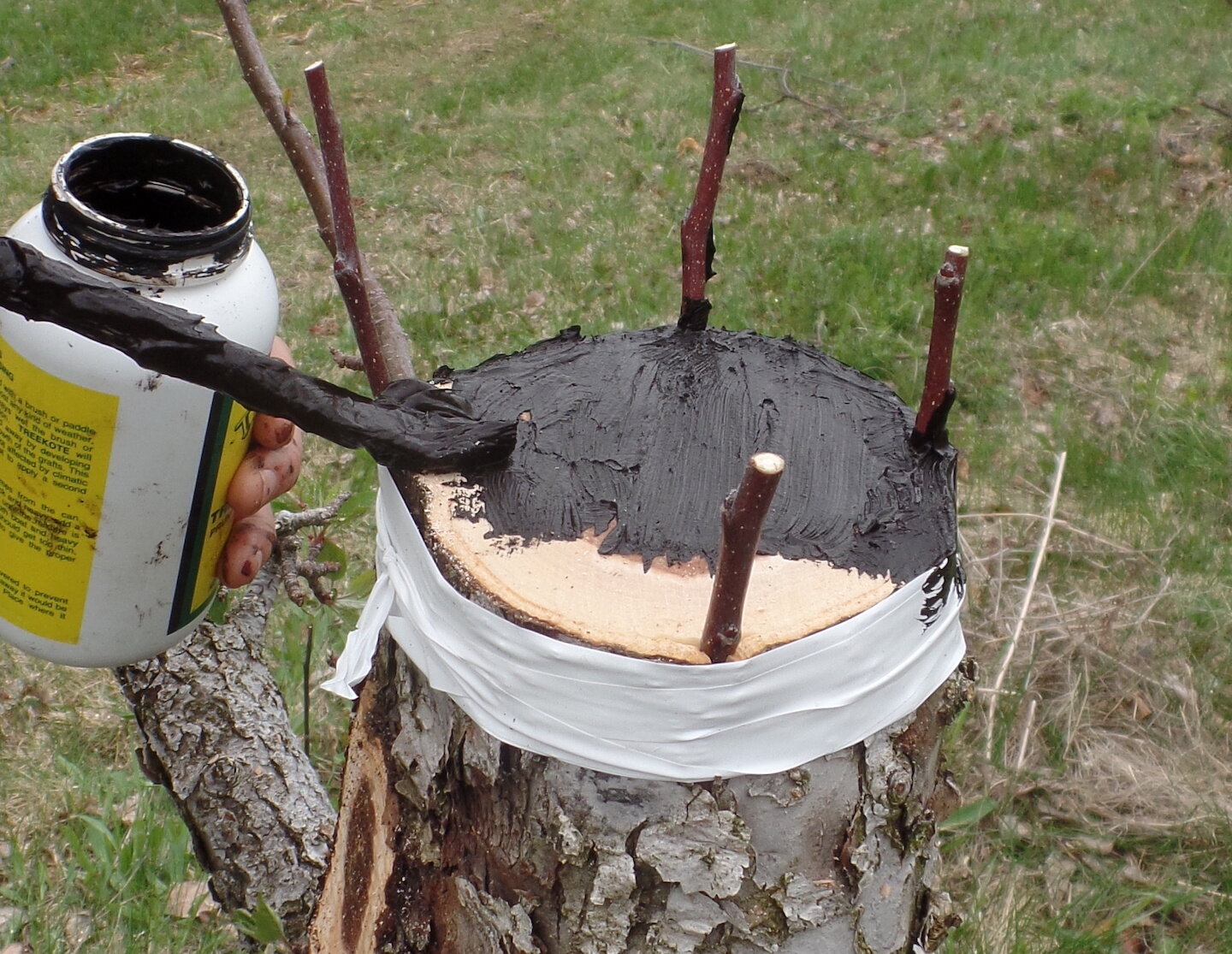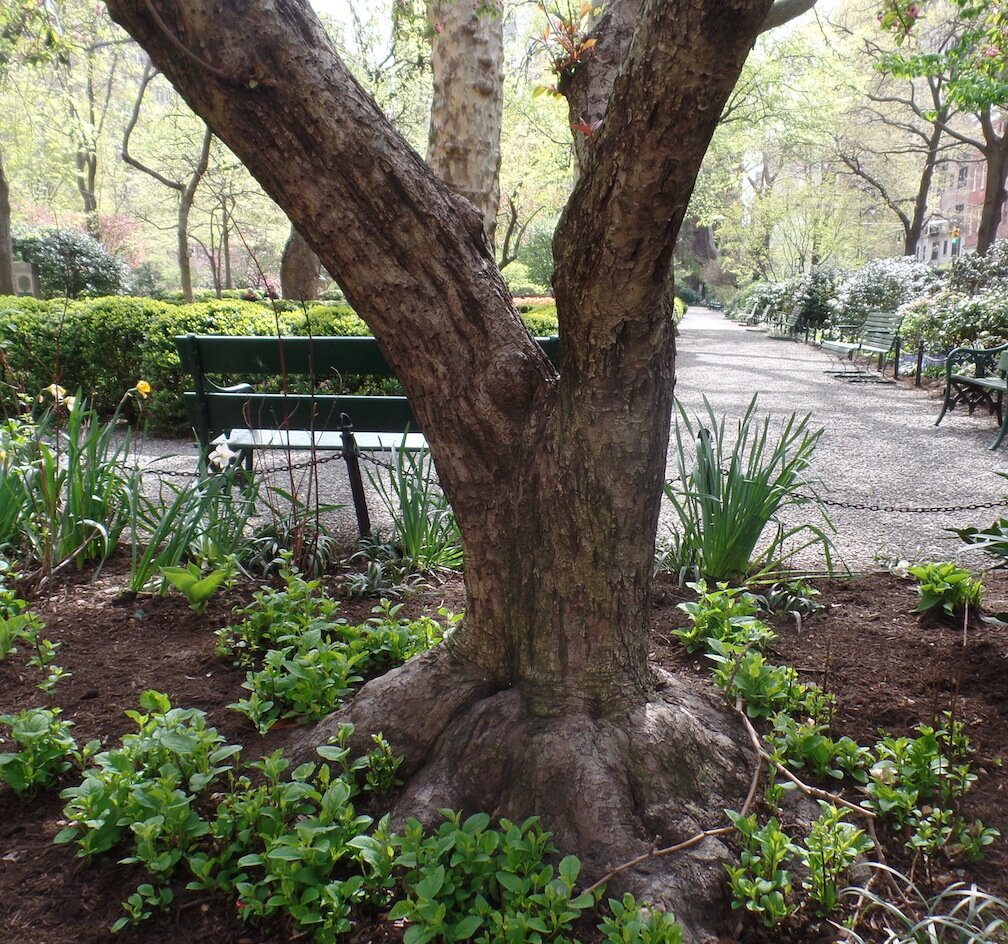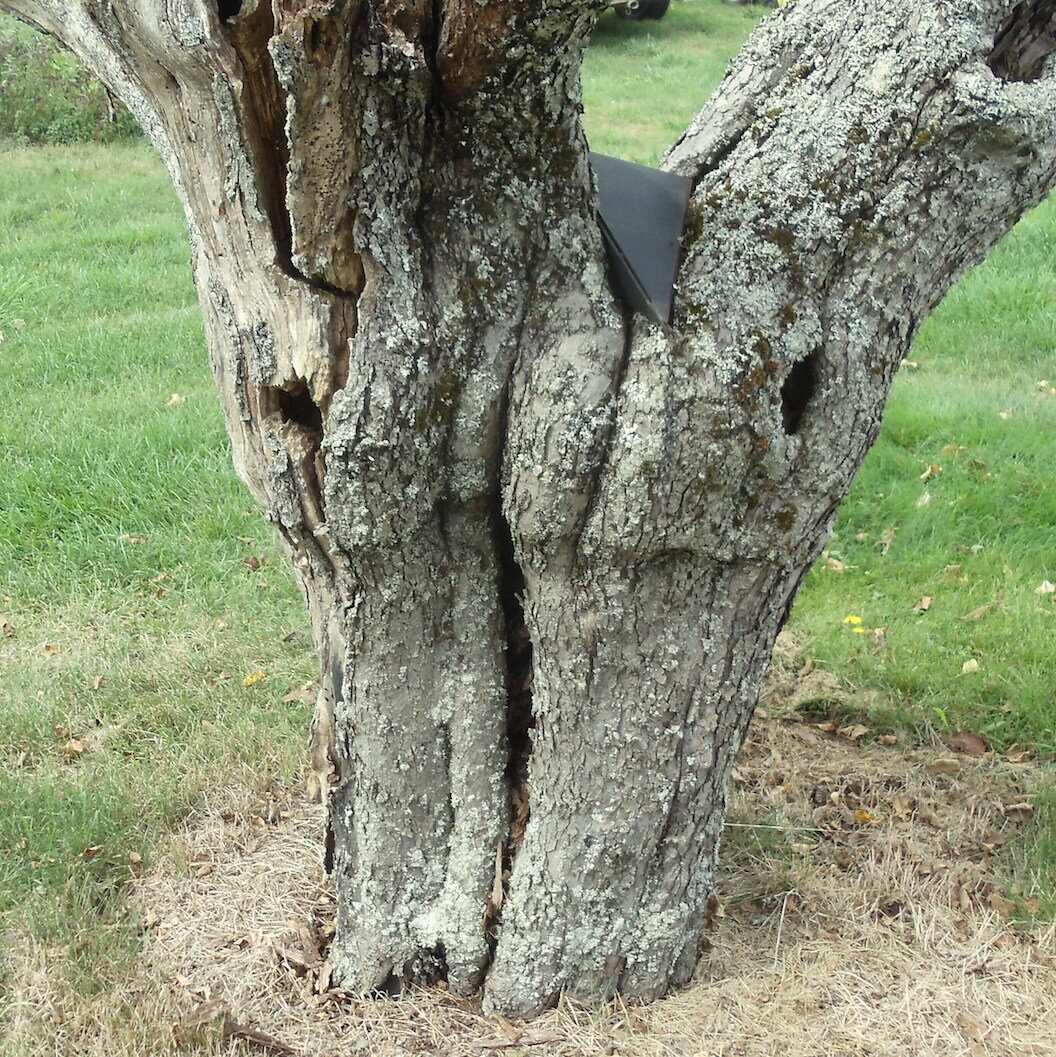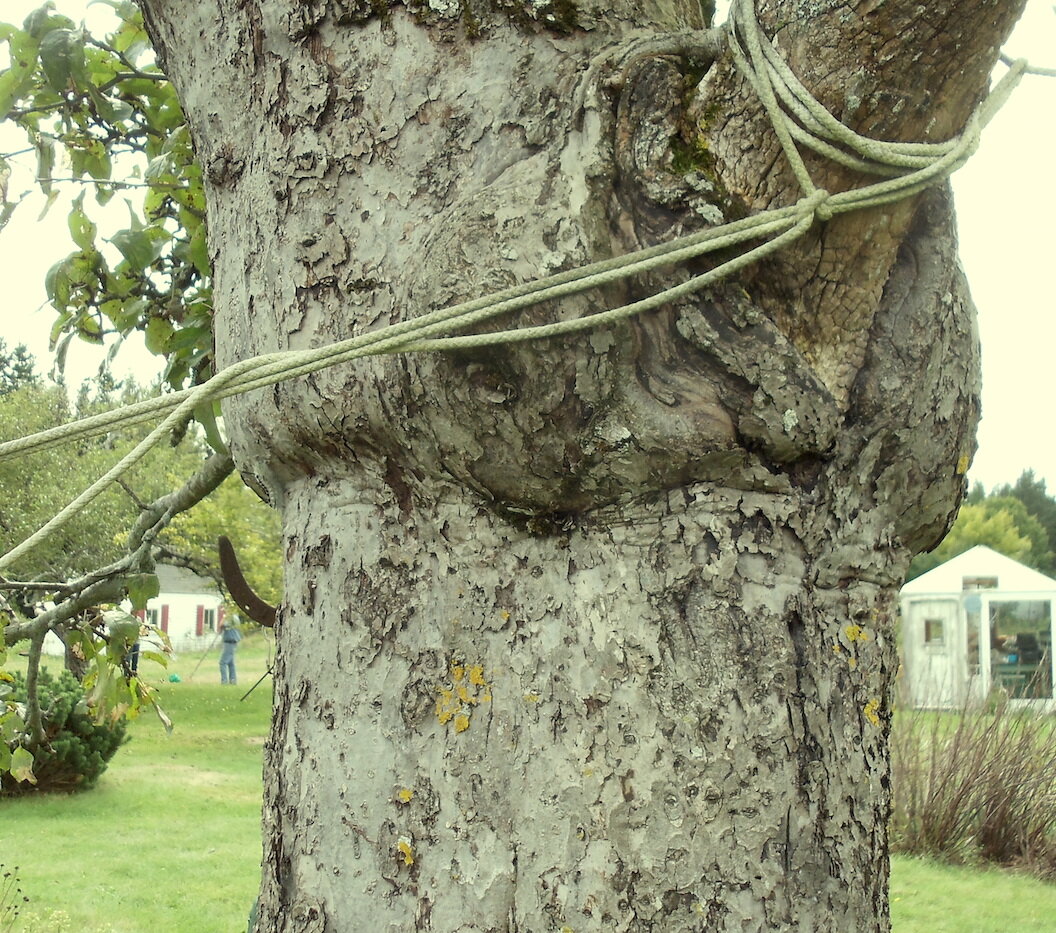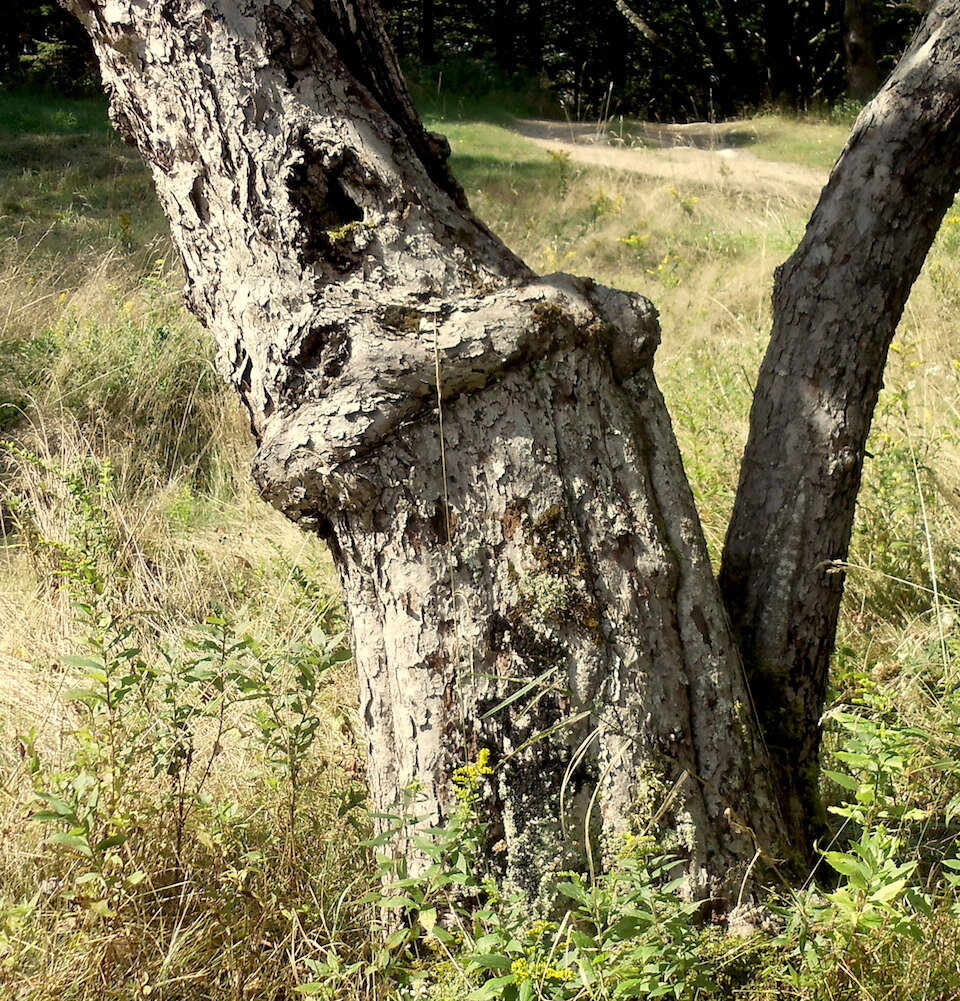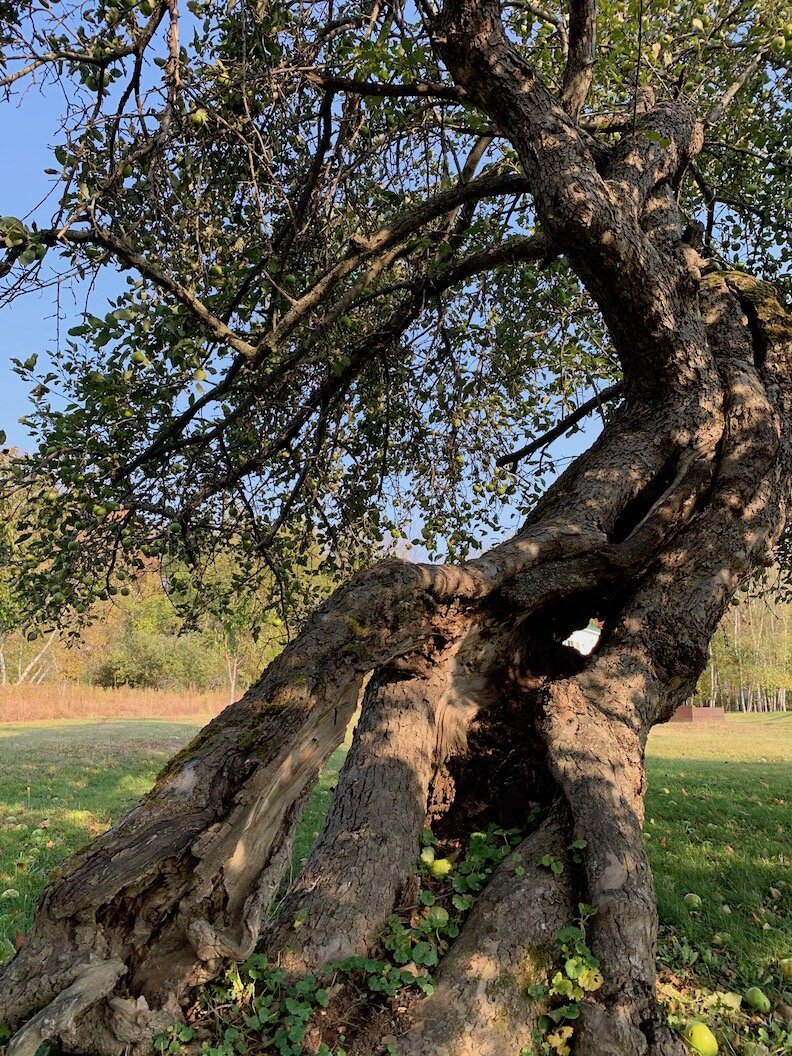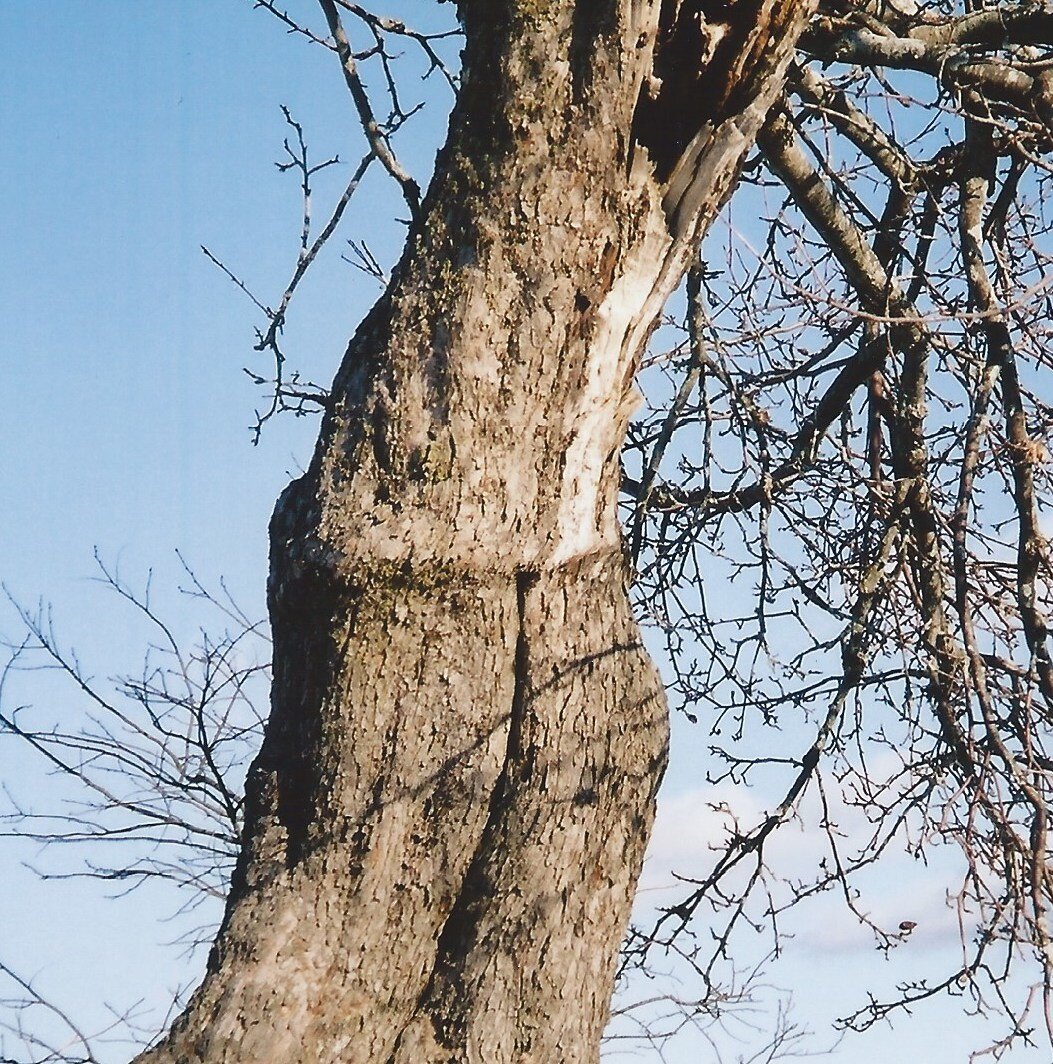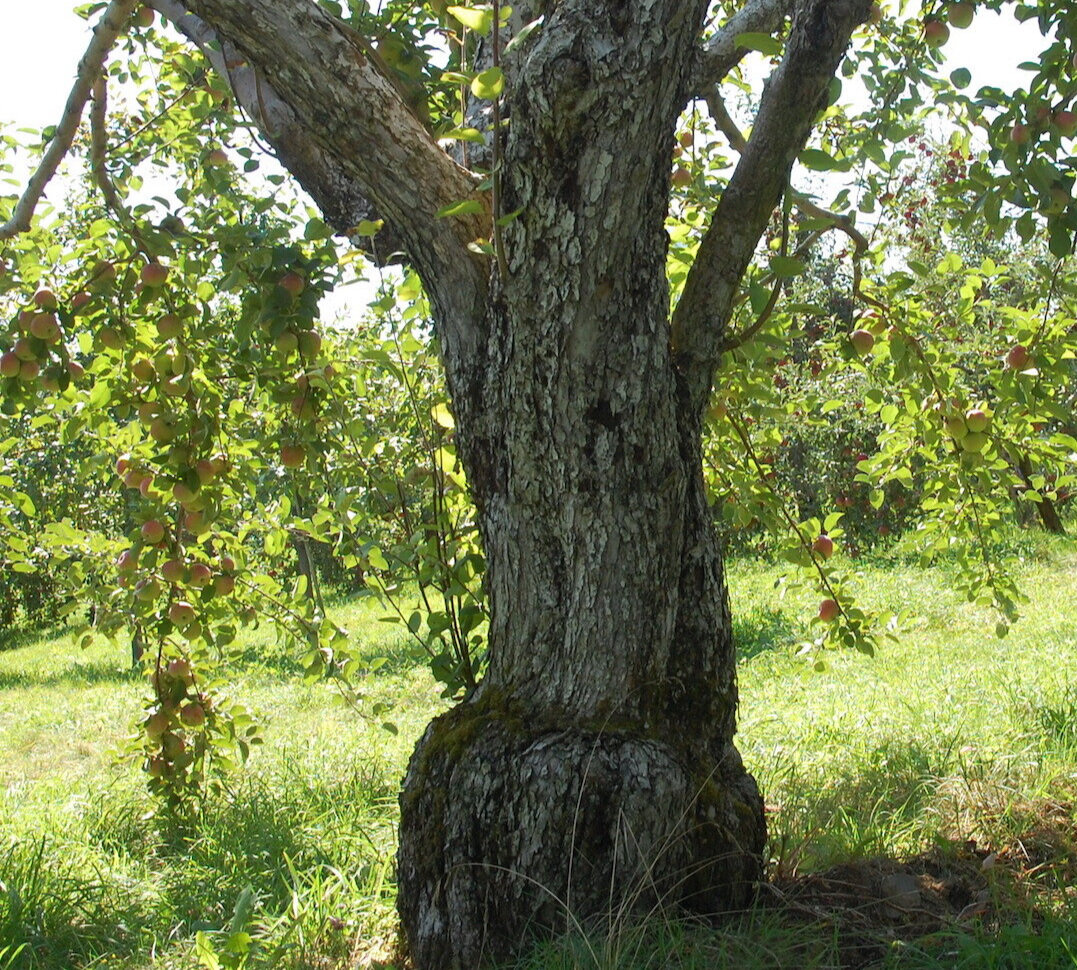Whenever people bring John an apple to identify, the first question he asks is, “Is this from a grafted tree or a seedling?” He doesn’t expect that most people will be able to answer that question immediately, but it is the place to start if you are looking to discover the history or name of an apple. The apple tree is remarkable in that it can live and bear fruit for 200+ years and along the way it is gracious enough to leave us some clues to its story. One of those clues is a visible graft line.
Apple trees are prolific. Over evolutionary time they have developed a brightly colored, mostly round package of seeds that has allowed them to spread themselves across the land to ensure their reproductive success. They make use of the natural landscape to roll their seeds down hill away from the mother tree or to float their seeds down rivers or across ponds. No hill or water body nearby? No problem. Their showy fruit attracts bear, deer, birds and other fruit eaters to spread their offspring, complete with a dose of fertilizer, even further afield. In recent times apple eaters traveling the countryside in cars have added to the roadside distribution of wild apples. In fact the spread and germination of apple seeds has been so successful in Maine, that researchers at the University of NH now estimate that our state is host to 70 million seedling apple trees.
And every single one of these seedling apples is different from every other, even if the seeds come from the same parent apple. This is because, unlike many plants, apple trees are not self-pollinating and must be pollinated by a different variety or species of apple. As a result the genetic combinations are endless. The only way to reproduce identical varieties of apples is through cloning which in the case of apples is done by grafting. Hence the above gallery of pictures that illustrate two types of grafts (bark graft and whip & tongue graft) in progress and what they might look like many years later. Chances are that you won’t be lucky enough to find such an obvious graft on your tree and that it will take more detective work to discover the story behind that fantastic, mystery pie apple that you pick every fall. But that is where the fun begins. To learn more, put on your Sherlock hat and zoom into the Apple Identification webinar that John is giving at the University of Idaho Heritage Orchard Conference this Wednesday, October 20th at 1:00 pm EDT. Registration is required. And if it turns out that you have discovered a star among the 70 million seedlings instead of a long-lost grafted heirloom, you can celebrate your discovery by naming it.
Picks of the week:
(Click each variety for more info)
The apples in your share this week are a celebration of New England apple history. Four of the six varieties originated in Maine or our neighboring states and a fifth first touched down from England on the fertile soils of the Kennebec River Valley. As you bite in, let your mind imagine all the runners in the relay race of time that discovered, nurtured, shared, grafted and passed these apples down through many generations for us to enjoy today.
The senior of the bunch is Ribston Pippin, an English apple originating about 1700. Benjamin Vaughn of Hallowell was so enanamored with it that he brought it to Maine just before the Revolutionary War where it quickly grew in popularity across the central and coastal regions of the state. It is as beautiful to behold as it is delicious to eat. The orange, red, golden and pink skin glows like a beacon in the orchard, even on a cloudy day. It’s not a good keeper, so don’t admire it for too long.
Next up is the old Maine (and OOAL) favorite Blue Pearmain. This New England variety dates back to the 1700’s, and we have to admit that it might be the most promiscuous apple that we offer. In fact it is believed to be the parent of two other apples in your share this week, Nodhead and OOAL first-timer Rolfe, as well as the most famous Maine apple, Black Oxford. Each of the offspring seems to have inherited a different one of Blue Permain’s remarkable qualities - Rolfe got the giant size, Nodhead got the sweet fall flavor, and Black Oxford got the spectacular deep purple, pink and russet sheen. Blue Pearmain and Rolfe are classic baking apples - core then, stuff them, roast them, baste them - you can’t go wrong. (Check out the recipes for baked apples here.) Nodhead seems better suited to fresh eating than the other two, but it holds its own in cakes and apple brownies. (You’ll have to wait til Share #5 to find out what to do with Black Oxford).
Family Portrait: Maine native, Rolfe, and its famous parent, Blue Pearmain
The late-comer to this historic apple party is the CT apple, Pound Sweet. As with all the old varieties, the Sweet in the name refers to the fact that the apple is not acidic, so don’t expect that familiar sweet-tart combo that we have come to expect. The Pound Sweet in your share taste more like ripe Honeydew Melons than apples to our taste buds, especially the ones that have some watercore. Sweet apples don’t dissolve when they are cooked so they were beloved for stewing and roasting where they retain their integrity.
Once you’ve finished your apple history lesson, we offer you one final stop at a more modern apple whose heritage comes straight from the mountains of Kazakhstan. Hidden Rose is a gem whose secret we only discovered a few years ago. Not all red-fleshed apples are good to eat fresh, but Hidden Rose is a happy exception. Slightly bigger than a crab apple, they are the perfect size for tucking in a pocket or a lunch box. Just think of the sensation you will create when you cut it open in front of your friends who are munching on a grocery store Gala.
Our apples come to you straight from the tree, so, as with all fresh produce, please be sure to wash them thoroughly before eating. Some of the apples are grown using Integrated Pest Management by the orchards we collaborate with throughout Maine, and some are organically grown here on Super Chilly Farm.
Recipe of the Week
Modern apple cookbooks don’t seem to include recipes for true “sweet” apples that lack acidity. That’s probably no surprise since the old sweet apples are hard to come by, even at farm stands. But old timers grew a sweet apple or two in their home orchards to use for molasses, sauce and sweetening meat dishes. Before the days of peptobismol Dr. Mom cooked up sweet apples in milk for family members with an upset stomach.
John is still a big fan of sweet apples in stew. They hold their shape through the hours of slow cooking and impart a subtle contrast to the savory meat. He served as advisor and taste tester for the following recipe.
Wicksons at sunrise waiting to be harvested.
Lamb Stew with Apples
Ingredients:
1 Tbs olive oil
1 pound of lamb stew meat - cut into cubes
3 firm, sweet apples - cored and chopped into 1” cubes
2 medium onions - chopped
3-4 medium tomatoes - chopped
2 Tbs tomato paste
4 cups dry white wine or dry hard cider
salt and pepper to taste
½ tsp ground coriander
½ tsp sweet paprika
1 cinnamon stick
1 bay leaf
½ tsp cayenne pepper (optional)
Directions:
Preheat oven to 350°. Heat the olive oil in a Dutch oven or other oven-proof casserole. Brown the meat well on all sides. Season with salt and pepper.
Stir in the spices, and let them sizzle in the oil for a minute or two. Then add the onions, tomatoes, apples, bay leaf, cinnamon stick and tomato paste. Stir well so the vegetables and apples are coated with the spices.
Pour in two cups of the wine/cider, and bring to a boil. Give it a taste, and adjust the seasonings.
Cover the casserole, and place in the preheated oven.
Cook the stew for 2-4 hours. The longer you cook it, the more tender the lamb will be. Make sure you check on it every half hour or so and add more liquid (wine/cider/water/broth) as it dries out.
When the lamb is tender enough to melt in your mouth, it is time to eat. Serve over rice or with crusty bread to soak up the juices.

